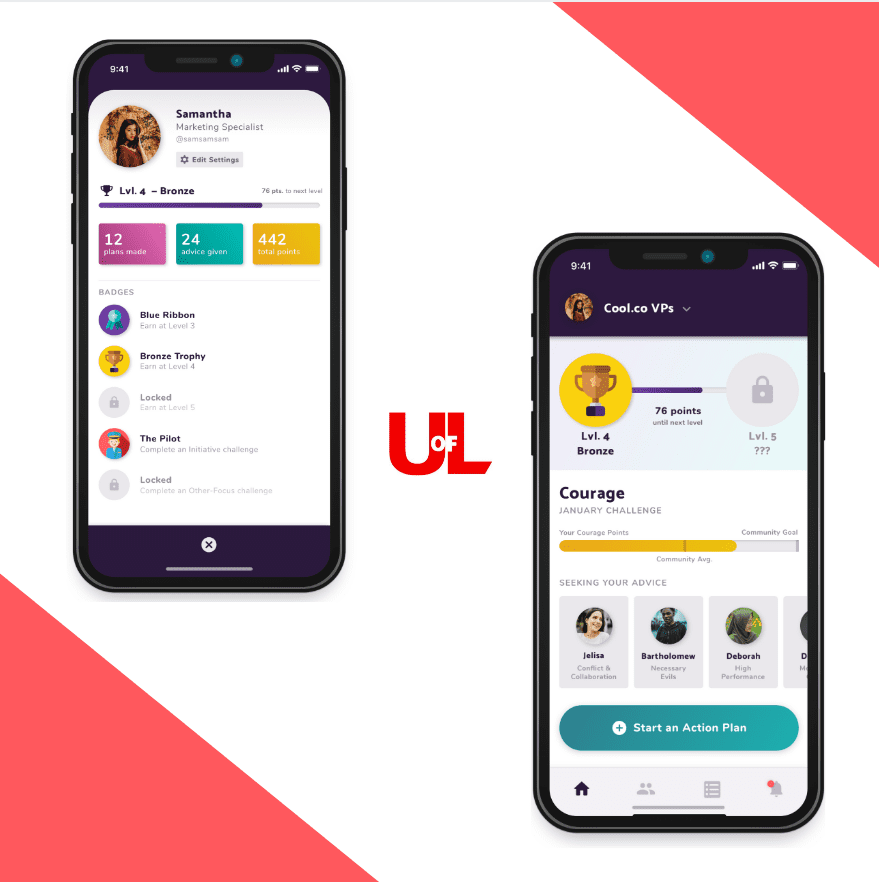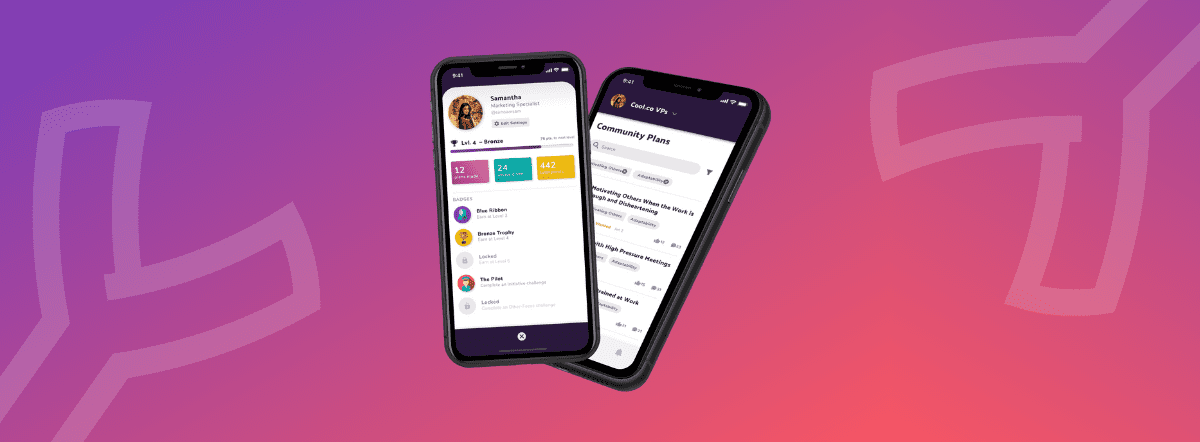Recently, we’ve been playing with the University of Louisville’s College of Business to build a mobile app that teaches students about positive leadership.
Learn about the process of transforming their idea into a software that will teach the next generation of leaders.
Dream
Ryan Quinn holds a Ph.D. and is a professor at UofL’s MBA program. Before starting his adventure with Slingshot, Ryan was using a website forum for his classes. Students would create posts about leadership issues based on Ryan’s guidelines. He and other students would comment their opinions and ideas.
While the website worked, Ryan knew there was more that could be done to teach his students. Instead of simple discussion boards, why not create an environment that was fun and engaging to use?
Enter: Slingshot. We sat down with Ryan and discussed his vision and ideas. We all agreed we wanted to build a way to teach positive leadership that encouraged users to work on their skills in a practical way. The main goal was to emphasize the 4 categories of positive leadership: taking initiative, focusing on others, being open, and having integrity.
Research
To decide what the application should have, we met directly with end-users: students and leaders. What skill-building tactics would most benefit students? What did leaders often struggle with? What type of support was desired?
Through one-on-one interviews, we uncovered needs, frustrations, and ideas. We examined their answers, allowing us to spot trends and opportunities for app features. We ranked these features based upon their complexity to build and business value, effectively narrowing the product down to its essential form, or the Minimum Viable Product (MVP).
To confirm our conclusions, we built a one-page marketing website highlighting our focus. We shared it with potential users, and an open-ended survey followed. There was outstanding interest regarding the software, so we moved forward with the proposed ideas. Based on our findings, we decided to build an iOS and Android mobile app, instead of a web application, to ensure leadership development was most easily accessible and timely.
Our plan had been laid out. The app would need to be engaging enough to encourage leaders to repeatedly connect with the community. We would use our big-kid creativity to gamify the app, making it feel more like a game and less like homework. We also needed to maintain the integrity of meaningful leadership development.
Design
Using the collected research, our designers began crafting wireframes and prototypes of the app. There was a lot of ground to cover, so it was clear the information in the app should be spaced out across several screens in order to be usable and effective.
Continuing with the theme of gamification, we needed to make the process of leadership feel attainable and engaging. Each action in the app was assigned a point value: creating a plan, giving others advice, liking posts, and so much more. Once you had gained enough points, you would level up (just like in a video game) and earn a new badge. The longer you practiced, the harder the points would be to get, encouraging you to rise to the challenge. Additionally, to foster a sense of community you could earn points via community challenges. These challenges provided a commonommon goal for users to plan around a specific virtue and the chance to earn a unique badge.
With the groundwork laid, it was time for our developers to enter the ring.

Develop
Coding and testing were the next steps.
We knew we wanted to build both an android and an iOS app, and we decided to use Xamarin: a cross-platform open source mobile app development framework. We’ve developed several apps with Xamarin before, and it would save us time and money over more traditional native development.
When using a cross-platform tool like Xamarin, there’s still a significant amount of testing and customization for both iOS and Android, as well as testing on multiple devices.
For mobile projects in particular, it’s critical to have a well thought-out testing process and a dedicated QA analyst. In this case, our on-staff QA analyst worked with the development team throughout. They tested several releases along the way for both Android and iPhone devices, including those with different operating system versions and screen sizes.
Ryan also joined in, testing releases multiple times throughout the project until all features had been developed.
For this app, we also had calendar integration with both Apple’s and Google’s calendar. This was a key feature for the app and allowed users to create leadership activities directly connected to events that leaders would attend. For this to happen, unique code had to be developed for both scenarios.
Finale
Now published and ready for the first round of real-world user testing, the app will be available in the UofL enterprise app store. Students and leaders will have access to positive leadership training from anywhere, right in the palm of their hand. The app allows for simple and fun learning, and the connected community within the app lets leaders share and engage with others.
Ryan’s dream of innovating the world of positive leadership and the way students learn is one step closer. He said it best: “Slingshot took our idea of creating an intuitive but fun mobile app and gave us so much more. They are fun to work with: their people were fun, and the process was fun. Slingshot took what leaders, students, and teachers wanted and combined all of it into the design. We can’t thank them enough for their help.”
Thank you Ryan and UofL for shaping tomorrow’s leaders. Go cards!




